The Story of Culture and Arts
- Image resource of Korean history
- Documents from History TextBooks
- Culture & Art Stories from Korean History
- Culture & Art Stories from Korean History - Korean
- National Institute of Korean History
- History net
- About the site
- Introduce
-
Numerous topics related to Korean culture and art are mentioned in middle and high school national history textbooks, but most of them are briefly described by era, making it difficult to understand their concepts, transition processes, and characteristics.
<Culture & Art Stories from Korean History> produces and provides video materials based on expert commentary on the flow, change process, characteristics and characteristics of each major topic in the field of culture and art in Korean history.

Scenario
Korean Currency
Money was invented to overcome the constraints of barter. - Carl Menger, Austrian economist
Currency, more commonly referred to as money!
These days, money is no longer limited to bills and coins, but includes gift certificates, membership points, mobile money, and cryptocurrency, as well as other new forms of payment. Currency is taking on different shapes faster than ever before.
Let's take a look at the kind of money Korea used in the past.
We've always had a form of currency!
“Go to the market and sell some rice.” A phrase you sometimes here from the elderly. But why would you go to the market and sell rice, not buy it? Because in the past rice was used as a form of currency.
Money is a type of bartering system that determines an item's worth, while being able to preserve its own worth while in circulation.
In ancient times, clam shells, iron, and precious metals were all considered acceptable forms of currency, but in actuality, grain and cloth were the primary forms of currency used in bartering.
Among the types of grains used for currency, the majority of bartered grains were rice, barley, beans, and millet.
But milled white rice fetched a far higher price than regular rice.
When it came to cloth as currency, hemp, ramie, and silk were the most commonly traded items.
Since the Three Kingdoms period, silk was used as one of the highest forms of money.
Long ago, anything related to food and clothing was used as money as well as a measure of value.
Korea’s first coin, “Geonwon Jungbo,” was minted during the Goryeo Dynasty and was made of iron.
The Geonwon Jungbo was made using coinage from China’s Tang Dynasty as reference. To distinguish between the two coins, those from Goryeo had the words "Eastern Country" printed on the back.
At around this time, a new monetary policy regarding the minting and distribution of coins was implemented. This was done to strengthen royal authority as well as to regulate national finances.
There is nothing more important than coinage, which may benefit our country and enrich the people … It is only now that we have issued decrees about the minting of metal coinage. - Goryeosa (History of the Goryeo Dynasty), article on money from the Sikhwaji(Treatise on Food and Money), 1102 (Year 7 of King Sukjong of Goryeo)
During the reign of King Sukjong of Goryeo, the Directorate of the Mint was created, a department in charge of regulating money, and the Haedong Tongbo was minted. As a measure to strengthen monetary policy, officials were encouraged to receive their salaries in these coins and to spend the money at local taverns.
However, a coin's value was unreliable in the marketplace, making it impractical when purchasing goods. Because of this coins did not find wide usage.
During the Joseon Dynasty as well, grains and cloth were the key forms of currency in everyday life.
At the beginning of the Joseon Dynasty, cotton played a prominent role as a main currency. Cotton of the highest grade was stamped with “Joseon Tongpyejiin,” which meant that it could be used as currency.
As a result, over many generations grains and cloth continued to play an important role as currency.
Joseon King's Devotion to Currency Circulation
So when exactly did coins become accepted and circulated throughout Korea?
The Kings of the Joseon Dynasty consistently made laws emphasizing the use of coins as currency and minting them for widespread use.
Through these measures, the kings aimed to dispel the mistrust of the people citizens towards coinage and to boost the coins’ value.
but after the Japanese Invasions, the necessity for a circulating coinage was accentuated in order to procure military supplies and secure the national finances.
he street in front of Gyeongbokgung Palace would make an ideal place for restaurants. I would like to gather people to manage restaurants there. I believe those restaurants will help deal with the thirsty and hungry. - Injo Sillok (Annals of King Injo), June 18, 1626 (Year 4 of King Injo of Joseon)
King Injo tried to promote the circulation of coins by renting out vacant rooms in front of Gyeongbokgung Palace and having restaurants opened, where the coins could be used.
It was an attempt to open the people’s eyes to the value of using coins.
Further, laws were rolled out nationwide allowing people to pay their taxes in coins. Government officials were also required to use coin money for their expenses when they traveled.
Also, due to seasonal problems such as droughts or poor harvests, it became more difficult to manufacture and circulate grains and cloth.
As the appearance of markets and merchants raised the importance of currency due to its ease of transport and storage, the value of coins began to rise.
During the reign of King Sukjong, coins called “Sangpyeong Tongbo” were minted and circulated throughout the country, becoming Korea’s first real currency.
The design of the Sangpyeoung Tongbo differed slightly depending on the region where it was minted, with almost 3,000 different varieties.
The round shape of the coin represented the sky, and a square in the middle, the earth. On the front, the words "Sangpyeong Tongbo" were imprinted, and on the back, a mark, one of the five elements, and a number so that people could verify the coin’s authenticity.
The Sangpyeong Tongbo was used for almost 200 years, making it the longest continuously used currency in Korean history.
The Sangpyeong Tongbo was also known as “Yeopjeon,” meaning “leaf coins,” a name that derived from the way the mold of the coins resembled leaves on branches.
So how much is a Sangpyeong Tongbo coin worth in today's money?
For 1 nyang of Sangpyeong Tongbo, you could purchase 20 kilograms of rice, and with 4 nyang, you could purchase either 80 kilograms of rice or 1 nyang of silver.
One pun of Sangpyeong Tongbo equals about 200–300 won in today's money, so the phrase in Korean "Give me one pun!" when figuratively talking about something cheap refers to this unit of currency.
As the Sangpyeong Tongbo achieved nationwide circulation, it became possible for people to accumulate wealth. This also brought about many social changes.
One change was the emergence of Byeoljeon, which reflected the people’s desire to accumulate wealth. They were merely decorative pieces and unable to be used as currency.
During the reign of King Gojong, a new type of money was issued - the Dangbaekjeon and the Dangojeon. But such a large issue of money caused the value of the money to drop sharply. This also brought much turmoil to the market.
From this point, Japanese currency began to flood the market and Joseon currency began to lose its power.
When did Koreans first start using the currency they use today?
In August 1950, the Bank of Korea issued their first official denominations, the 100 won and 1000 won bills.
The foundry began printing new bills, such as the 5000 won, 10,000 won in the 1970s, and the larger denomination, 50,000 won bill was released in 2009.
The images of people and artifacts found on Korean bills allow us a glimpse of some of the most important figures and artefacts of Korean history and culture, while at the same time preventing forgery.
On the face of the 10,000 won bill, the representative piece of Korean currency, you have the portrait of King Sejong the Great, the “Sun and Moon and Five Peaks” Screen, and words from the poem “Yongbieocheonga”(Song of Dragons Flying to Heaven). On the back side, you have a celestial globe and the “Cheonsang Yeolcha Bunya Jido”(a 14th century stone star chart) with a map of constellations drawn on it.
The value of Korean currency has fluctuated with social and political changes throughout history.
[Epilogue]
Must-Know Facts on Culture and Art in Korean History
1. In ancient daily life, grains and cloth were traded as currency in a system called bartering.
2. The first minted copper coin was called the Geonwon Jungbo.
3. The longest used currency in the history of Korea is called the SangpyeongTongbo.
Life & Folklore
17 films-
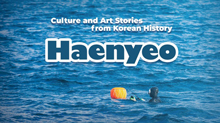 Haenyeo, female divers in Jeju08:52
Haenyeo, female divers in Jeju08:52 -
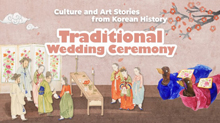 Traditional Wedding Ceremony08:22
Traditional Wedding Ceremony08:22 -
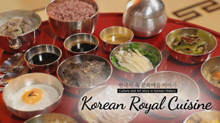 Korean Royal Cuisine08:22
Korean Royal Cuisine08:22 -
 Gat and Traditional Headwear of Korea08:48
Gat and Traditional Headwear of Korea08:48 -
 Managing Epidemics throughout Korean History08:48
Managing Epidemics throughout Korean History08:48 -
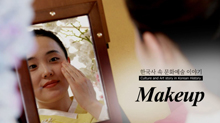 Makeup07:52
Makeup07:52 -
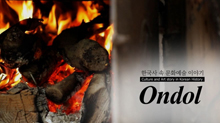 Ondol, Korea's Underfloor Heating System08:40
Ondol, Korea's Underfloor Heating System08:40 -
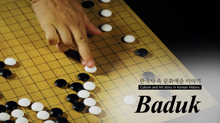 Baduk08:32
Baduk08:32 -
 Four Treasures of the Study09:34
Four Treasures of the Study09:34 -
 Farming Implements09:12
Farming Implements09:12 -
 Coming-of-Age Ceremony08:41
Coming-of-Age Ceremony08:41 -
 Ginseng08:44
Ginseng08:44 -
 Tobacco08:27
Tobacco08:27 -
 Kimchi08:37
Kimchi08:37 -
 Relief Crops08:37
Relief Crops08:37 -
 Korean Currency09:28
Korean Currency09:28 -
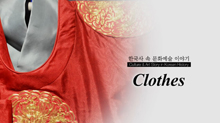 Clothes08:20
Clothes08:20

